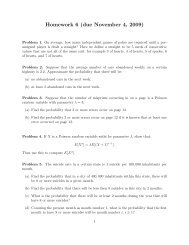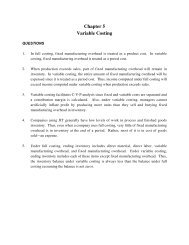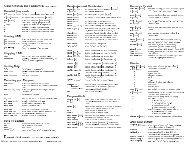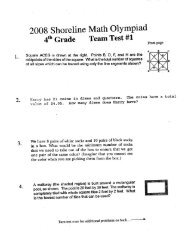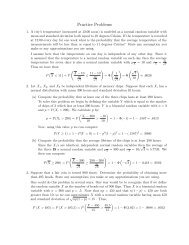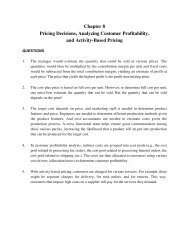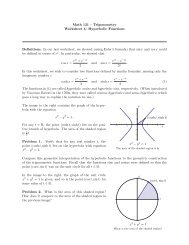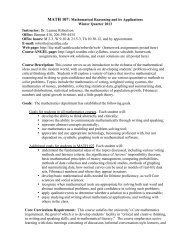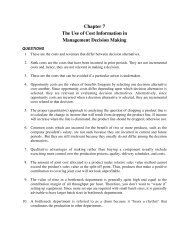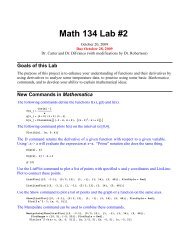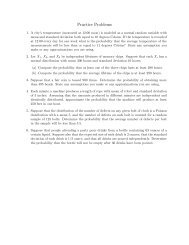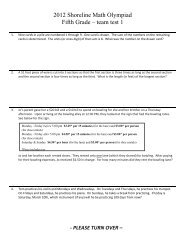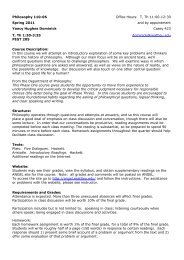MATH 351 Fall 2009 Homework 1 Due: Wednesday, September 30
MATH 351 Fall 2009 Homework 1 Due: Wednesday, September 30
MATH 351 Fall 2009 Homework 1 Due: Wednesday, September 30
Create successful ePaper yourself
Turn your PDF publications into a flip-book with our unique Google optimized e-Paper software.
Again we proceed in a similar fashion and count the committees when Mr. X and Ms.<br />
A serve ( together. To do this we first choose the 2 other men from the remaining ( 5,<br />
5 7<br />
or = 10 and then choose the other 2 women from the remaining 7 or = 21.<br />
2)<br />
2)<br />
Thus the total number of ways in which they can serve together is the product of<br />
these two numbers of 210. Now the total number of committees in which they do not<br />
serve together is our total number of committees with no restrictions (1120) minus<br />
the committees where they do serve together (210). Thus the answer is 910.<br />
Problem 8. Let r, n, and m be positive integers, and let r < n and r < m. Then<br />
the following identity holds:<br />
( ) n + m<br />
=<br />
r<br />
r∑<br />
( ) ( ) n m<br />
.<br />
i r − i<br />
i=0<br />
Prove it combinatorially by considering a group of n men and m women, and determining<br />
(in two different ways) how many groups of size r are possible.<br />
To prove this we follow the suggestion and consider a group of n men and m women,<br />
and count the number of committees of r people we can choose from the total (n+m)<br />
people. Clearly one way to count this is the left hand side (LHS) of the equation we<br />
wish to verify.<br />
Now consider counting the same thing but breaking it into cases were we consider<br />
the committees that have no men, exactly 1 man, exactly 2 men, ...., all r are men.<br />
To do this consider the arbitrary case where there are i men in the( committee ) and r-i<br />
n<br />
women. Thus we must choose the i men from the total n men or and we must<br />
( )<br />
i<br />
m<br />
choose the r-i women from the total m women or Thus the total number of<br />
r − i<br />
committees ( ) ( ) with r people with i of them men and r-i of them women is the product,<br />
n m<br />
. Now since we want to count all the possible committees we must add<br />
i r − i<br />
all the cases where i = 0, i = 1, ....i = r. This is exactly the right hand side of the<br />
equation we wish to verify.<br />
Since both the left and the right hand side count the same thing, they must be equal.<br />
Problem 9. In the expansion of (z + 8y) 7 , what is the coefficient of z 4 y 3 ?<br />
6




